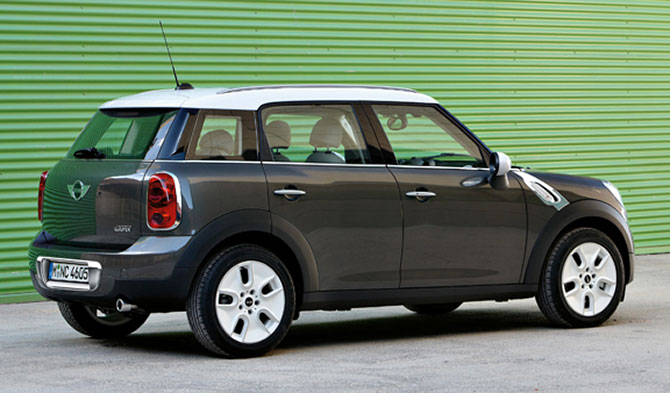Mini to the Max
by Jim Corbran

The 2011 MINI Countryman
I’m loving the new MINIS. The first new variation on the two-door hardtop, which made its bow in 2001, was the convertible in 2005. The Clubman, a three-door station wagon (but don’t call it that!) arrived on the scene in 2008. And coming next year will be the Countryman, a four-door MINI. With available all-wheel drive, yet.
If you’ve followed the history of the original British Motor Corporation Mini, which went into production for the 1959 model year, you might be a bit confused with BMW’s naming of its MINI models. As I mentioned, the new Clubman is basically an estate car, or station wagon if you must, while the first Mini Clubman back in 1969 was a restyling of the original Mini two-door saloon, with a more squared-off front end. The Traveller, an estate car introduced in 1961, most resembles the new Clubman in body style. And the original Countryman was Austin’s (another BMC nameplate) version of the Morris Traveller. If you really want to muck up the works, there were also Riley and Wolseley versions of the Mini, along with a pickup, a van, and the Jeep-like four-wheel drive Mini Moke.
The 2011 Countryman is unlike any of those Mini variants of the last century. For one thing, it’s larger. At 161.3 inches in length, it’s even two inches longer than the four-door Austin Maxi, another BMC sedan which was the logical step up for the British family which needed more room than the Mini could afford them. And compared to the four-wheel drive Moke, the new Countryman is an actual car—with a roof, doors, and all the other amenities one would expect in a car these days. Just for comparison sake, the new Countryman is about a foot shorter than a Ford Escape, and almost a foot-and-a-half longer than a MINI two-door hardtop.
One needn’t buy the new Countryman with all-wheel drive if one hasn’t a mind to, however. Standard powertrain when the car goes on sale next year will be front-wheel drive, attached to a 1.6-liter inline four-cylinder engine connected to a six-speed manual transmission. A six-speed, paddle shift automatic will be optional. The all-wheel drive option, known as ALL4, will be offered only in the upper scale Countryman S model. EPA gas mileage estimates are said to be 34 miles per gallon for both variations, which will be a huge plus, especially for an all-wheel drive crossover.
As expected, with the Countryman being the largest MINI ever, interior space will also be improved over current models. The higher roof affords more headroom. There’s still seating for four, but with a bonus in that the two back seats are on runners, and can slide forward and backward over five inches. This adjustment means not only are rear seat passengers more likely to find a comfortable sitting position, but the seats can be moved forward to maximize the rear cargo space, or folded flat to increase the volume to over 41 cubic feet. That’s hardly mini.
MINI fans won’t be disappointed with the looks of the Countryman. Even from a distance it’s definitely another MINI. Closer inspection reveals the extra height and length, the two back doors, and the liftgate, which many will find to be an improvement over the Clubman’s center-opening barn doors—for both convenience and better visibility out the window from the driver’s seat.
I’m expecting the Countryman to be MINI’s top seller behind the two-door. I also see it as a viable alternative to a Subaru. Yes, it will probably cost a bit more (some estimates are $25,000 for starters, with the ALL4 version fetching maybe another five or so grand). But, don’t forget, MINIs are really BMWs, with all the inherent cachet that comes with being in that family. I can’t wait to get into one.
Read “You Auto Know” every other week in Artvoice and more often on AV Daily at Artvoice.com. Plus check out Jim’s bolog: wnyersandlosers.blogspot.com.
blog comments powered by Disqus|
Issue Navigation> Issue Index > v9n29 (Week of Thursday, July 22) > Mini to the Max This Week's Issue • Artvoice Daily • Artvoice TV • Events Calendar • Classifieds |









 Current Issue
Current Issue